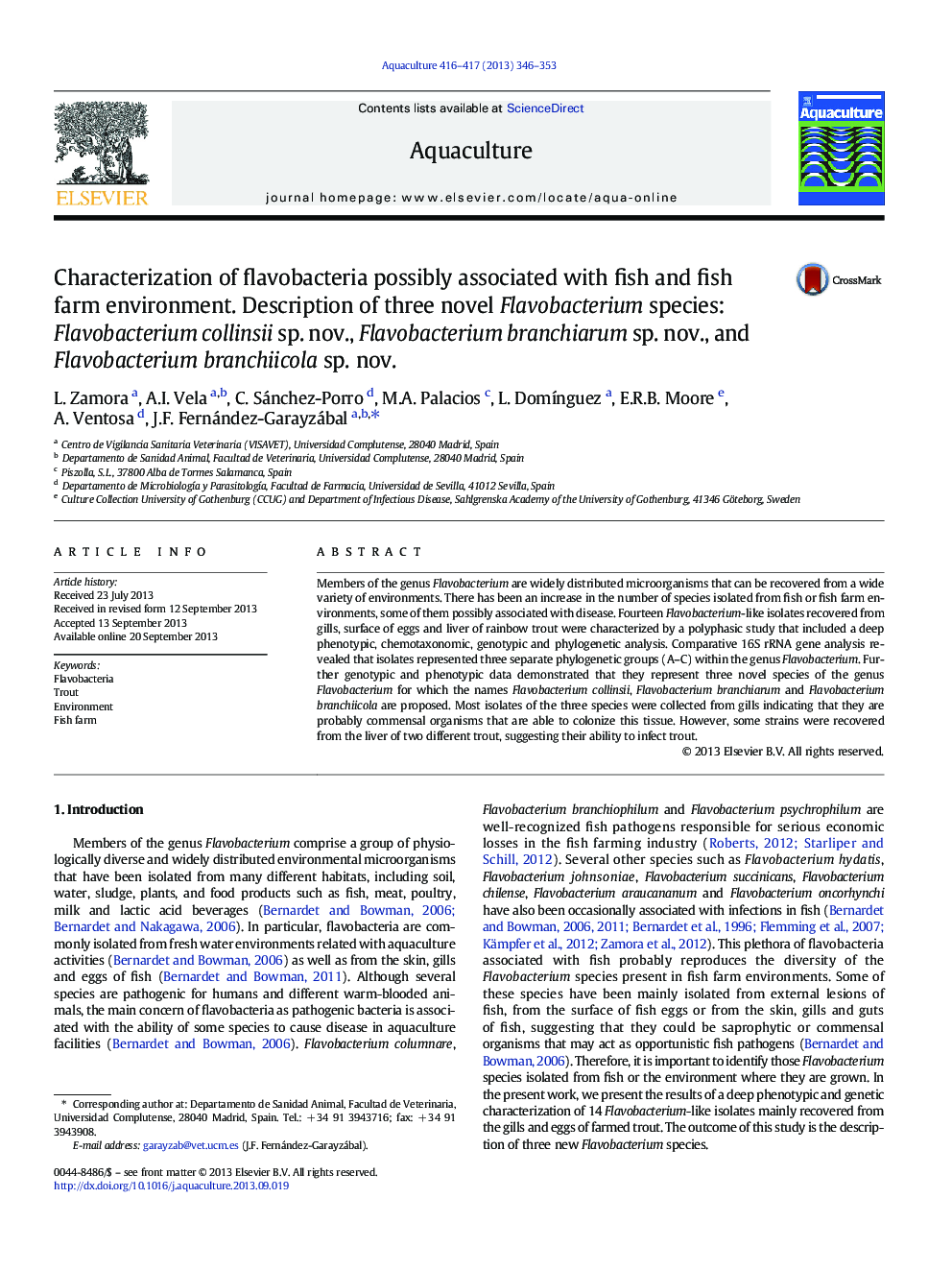| Article ID | Journal | Published Year | Pages | File Type |
|---|---|---|---|---|
| 2422021 | Aquaculture | 2013 | 8 Pages |
•Fourteen Flavobacterium-like isolates were recovered from farmed rainbow trout.•A polyphasic study revealed that they represent three novel species of Flavobacterium.•The names F. collinsii, F. branchiarum and F. branchiicola are proposed.•They probably are commensal organisms but able to colonize and infect trout.
Members of the genus Flavobacterium are widely distributed microorganisms that can be recovered from a wide variety of environments. There has been an increase in the number of species isolated from fish or fish farm environments, some of them possibly associated with disease. Fourteen Flavobacterium-like isolates recovered from gills, surface of eggs and liver of rainbow trout were characterized by a polyphasic study that included a deep phenotypic, chemotaxonomic, genotypic and phylogenetic analysis. Comparative 16S rRNA gene analysis revealed that isolates represented three separate phylogenetic groups (A–C) within the genus Flavobacterium. Further genotypic and phenotypic data demonstrated that they represent three novel species of the genus Flavobacterium for which the names Flavobacterium collinsii, Flavobacterium branchiarum and Flavobacterium branchiicola are proposed. Most isolates of the three species were collected from gills indicating that they are probably commensal organisms that are able to colonize this tissue. However, some strains were recovered from the liver of two different trout, suggesting their ability to infect trout.
